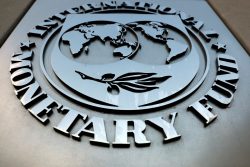Dear Editor,
It was a real pleasure to see Commissioner of Police, Leslie James and some members of his Executive Leadership Team literally pounding the police beat at Stabroek Market Square. It was so nice to observe so many boots of various sizes and quality on the ground at a crime hot spot.
Hot spots are specific locations with high crime rates. A hot spot can be a single address, a cluster of addresses, part of a block, an entire block or two or an entire intersection.
Although the police may tell us that according to their figures on reported crimes at the Market Square, crime is not high and that there is a reduction of crime in that area as compared to the previous year, the reality is that crime is committed regularly there during the day and night. Most of the crimes are not reported to the police for diverse reasons particularly by victims living outside of Georgetown. The police should stop depending too heavily on their crime statics to measure how well they are doing in the fight against crime. In his maiden address to the Police Officers’ Annual Conference, President David Granger urged, “Stop boasting about how many cases you made, find out how many causes you are able to discover, and let us stomp out the causes, you stomp out the cause, then you stomp out the crime. If you don’t know the cause then crime will continue to repeat over and over again.”
I can recall the Head of the City Constabulary bemoaning the high incidents of reported crimes at that popular Square and being bemused on how to deal with that sad state of affairs. Perhaps, the managing by walking about tactics adopted by the Commissioner and team and his subsequent interaction with the Head of the City Constabulary have generated some amount of actionable intelligence which will promote some intelligence led policing to bring about peace and tranquility to that hot spot. I cannot wait for such activity to be conceptualised, designed, developed, implemented and evaluated.
Cohen and Felson’s Routine Activities Theory forms the basis for what is known as The Crime Triangle. According to them there are three elements required for a crime to occur – a motivated suspect, suitable victim and adequate location. They posited that law enforcement officers must focus on all three sides of the triangle – the suspect, the victim and the location in order to reduce crime and the fear of crime. They argued that if the focus on any side of the triangle is removed or neutralised crime will not be suppressed. However, in most cases law enforcement officers spend most of their efforts on the victims and suspects while the locations are left untouched. In many instances political, economical, social, technological, legal, and environmental (PESTLE) issues and concerns are not properly addressed, thereby, enabling crime to flourish at those locations. Police will dismantle one criminal gang and almost overnight another one will emerge.
Braiden (1988) suggests another way to view the significance of locations – “the hunt and the habitat”:
“I can’t think of two special-interest groups more philosophically opposed to each other than hunters and animal rights activists, yet there are two things they totally agreed upon: the species will survive the hunt; it will not survive the loss of the habitat. How can policing learn from this basic principle of nature? Well, if the ultimate goal is to eliminate the criminal species forever, surely the best way to do that is to eliminate the habitat that spawns and sustains that species. Structured as it is, the criminal justice system puts 95 percent of its resources into the hunt while the habitat is left almost untouched. We can never win working that way, because the habitat never stops supplying new customers for the hunt.” In a subsequent article I will address another triangle- the government, the police and the communities as it relates to crime fighting.
It would appear as though Commissioner Leslie James has shifted the paradigm in relation to crime fighting strategies and tactics. At Stabroek Market Square he took a Tarzan swing in the right direction. However, more such visits to other hot spots, working in unison with the various stakeholders and taking condign actions against criminals as well as deviant members of the GPF are useful tools required to reduce crime and the fear of crime. Such actions must be encouraged. Sustainability is the watch word.
Yours faithfully,
Clinton Conway
Assistant Commissioner of Police
(Retired)








